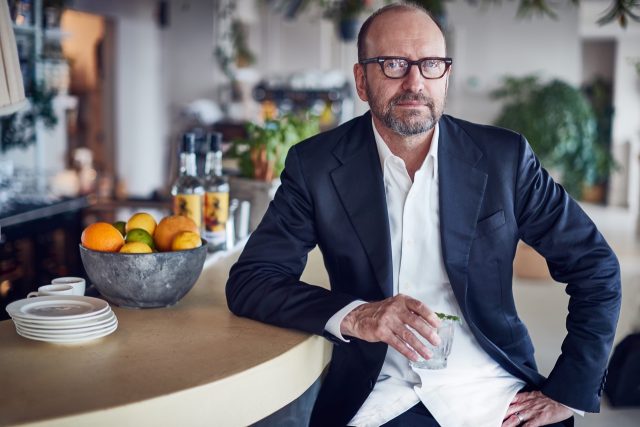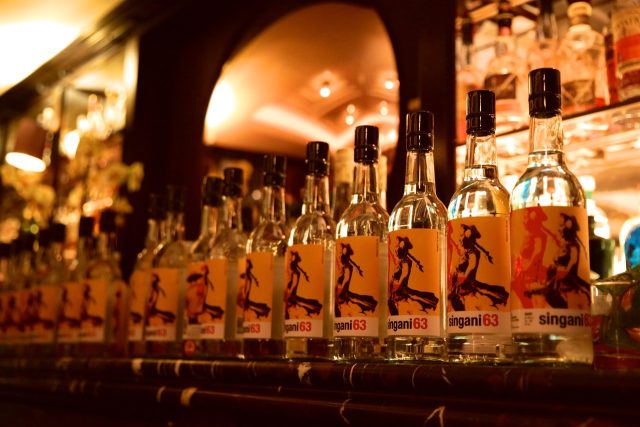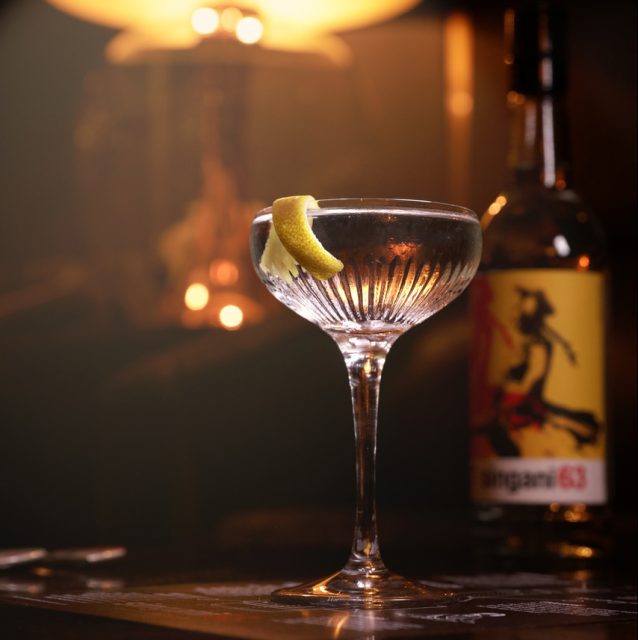This website uses cookies so that we can provide you with the best user experience possible. Cookie information is stored in your browser and performs functions such as recognising you when you return to our website and helping our team to understand which sections of the website you find most interesting and useful.
Steven Soderbergh: ‘I’m just a messenger for Singani’
Hollywood director and Singani 63 owner Steven Soderbergh tells db about the campaign to get Bolivia’s national spirit recognised, how he likes to drink it, and whether it appears in his upcoming film Magic Mike’s Last Dance.

Speaking with the drinks business just two days before the premiere of his new film, Soderbergh recounted how he first encountered the spirit on the Madrid set of his two-part Che Guevara biopic Che in June 2007: “We had put together a little startup party for the beginning of production, because if you’re going to make a movie about a Marxist revolutionary, you have to have a startup party. Our Bolivian casting director Rodrigo Bellott gave me a bottle of Casa Real Singani as a gift.”
Opening it to try a glass, Soderbergh, who usually opted for vodka, had his eyes, and palate, opened: “I wasn’t accustomed to something having such a bouquet, such a floral aroma. And then there was the way it was really active on the palate, and how many notes I was pulling out. The big thing for me was how it just vanished when you swallowed it.”
Made from Muscat of Alexandria, a highly aromatic variety, Soderbergh was shocked at the spirit’s smoothness and aroma. “I had to have a very serious heart to heart with vodka after tasting Singani,” he later joked.
That first sip would spark an obsession with Singani: “He [Bellott] had gotten a bottle on the black market of Madrid, because at that point it had never been exported out of Bolivia. I wanted to know how we could create a mule train for the next six months to follow us from Spain, Puerto Rico, Mexico, and then we would have finished filming in Bolivia at the end of the schedule. And so we had many, many conversations and managed to supply the production, or at least the camera department and the editorial department, with a steady flow of Singani for the six months we were shooting. By the end of that, we were all hooked, and I was getting a lot of pressure from the crew to become the importer so that this could become available in the US.”
“Had I known anything, literally anything, about the booze business, I would have dismissed these entreaties to become an importer,” he disclosed. “I just thought you fill out some paperwork, and then it happens, and you take it around and people put it on their back bar.”
Partnering with Casa Real in 2009 to create the brand, Singani 63 (the number a reference to Soderbergh’s birth year) arrived in New York in January 2014. That November, he would go to Washington to commence the lengthy, Kafkaesque process of dealing with the various bureaus and agencies, particularly the Alcohol and Tobacco Tax and Trade Bureau (TTB), he would need to persuade in order to change Singani’s classification from a brandy to its own distinct category.
When asked whether he felt that experience from his “day job”, as he called it, of dealing with movie productions helped him to manage this campaign, Soderbergh said: “Well, it didn’t hurt. If you look at the Government as the studio in this case, you understand that they have a way of doing things. They’re not going to break the mould for you, and therefore you have to be patient…There’s no way for me to use connections to put any kind of pressure on these agencies.”

Indeed, he argued that celebrity status can be a curse, rather than an asset, when it comes to growing a brand: “There are people who are resistant precisely because they don’t trust some of these celebrity brands in which because there there are instances in which people are not really involved and it’s a pure cash play. I wasn’t worried about it in the abstract because I knew what my intentions were. And I knew why I was trying to tell this story, and the point of difference between me and some of these other brands are that I’m just a messenger here. I don’t make this stuff. This is this is the story of Casa Real, the Granier family and the 500 year history of Singani in Bolivia. That’s the story. I have nothing to do with that. I’m just a guy who’s running around with a bottle in my backpack.”
But, though “just a messenger”, Soderbergh has devoted much of the past decade, when not directing, to boosting recognition of the spirit among US consumers.
The strategy that would prove to be successful was that used for the recognition of Cachaça, involving the recognition of Tennessee Whiskey and Bourbon as distinctive products of the US in Bolivia. He revealed that though things were moving at a glacial pace for years, they suddenly accelerated after a meeting with Justin Muzinich, Deputy Secretary of the Treasury in the latter half of the Donald Trump administration: “We gave our presentation, he asked a series of pointed, intelligent questions about the brand and the spirit and our experience and said: ‘Well, this seems pretty straightforward to me. I’m sorry it’s taken too long. I’m going to do whatever I can to push this through’, and after that things started to move.”
However, it was not until this month that this movement translated into official recognition by the US Government.
“On 13 January my phone started blowing up at eight in the morning, and I called one of the Singani 63 team members and said ‘what’s going on?’ They said ‘they [TTB] just posted it’. There was no warning…I didn’t realise until that moment how much psychic real estate this issue had been taking up for me.”
“It solves a lot of problems in terms of educating people within the industry, but also consumers. Now when a consumer goes ‘well I’ve never heard of this’, you get to say ‘that’s because it’s a new category’…Anybody in the industry knows it’s really hard to get a category. They don’t want to do this. It’s a hassle. And part of me feels like, you know what, from here on out, it’s all gravy.”
But, though the campaign for recognition from the TTB is over, Soderbergh is not resting on his laurels – he has international ambitions for the brand. Launched in the UK in 2018, he noted that the product has received a boost recently: “London in particular is turning into one of our biggest markets, especially in the last six months for reasons that I’m not quite clear on. It could be our connection to the Magic Mike Live show at The Hippodrome where we’re on the menu.”
“Now we’re getting calls from all over the place, you know, saying, ‘Hey, can we get it to Japan, Australia, Poland, Israel, Spain, Germany, etc.’. It’s on people’s radars now,” he said. “And I keep having to tell them that as soon as we have the resources, or we’ve partnered with somebody with the infrastructure to service this, we’re in, but we’ve got to be very, very careful right now that we don’t jump too high too fast. You don’t want to lose: I’d rather show up six or nine months later than show up too early and fail.”

As for how one of the most prolific filmmakers of modern times drinks his Singani, he likes it on the rocks, or ‘The Subwoofer’ as he calls it, so named because the “all encompassing, warm feeling” of the drink is reminiscent of the feeling of listening to a subwoofer speaker.
However, he also noted the “ridiculous versatility” of the spirit, making it perfect casting for cocktails: “Singani is egoless if you put it in a cocktail. If it feels like it should lay back, it lays back. If it feels like it’s appropriate to come forward a little bit, then it comes forward. It doesn’t want to be a bully, it wants to play nice, and it just seems to have this innate ability to find its role.”
One such drink, a variation on a classic Negroni, the ‘Singroni’, using Singani 63 to replace gin and Aperol in place of Campari, has proven to be a hit in steakhouses in the US: “It’s a little rounder around the edges. A Negroni was not something I typically drank, but I drink them now, with Singani, if I’m out and eating steak.”
With the upcoming release of Magic Mike’s Last Dance, db asked whether we might catch a glimpse of the spirit in the film: “There is a placement in there that is subtle and not subtle at the same time. I’m not so crazy that I’m gonna have one of my cast members order it by name, but there was an organic place for a character to sit down and have a drink to calm himself down, so he goes and gets the bottle. It’s a wide shot: the bottle is fairly prominent, but you don’t see the name on it, but anybody who knows Singani 63 knows the bottle’s very distinctive. Anybody that knows is going to laugh because it’s such a blatant misuse of a product placement opportunity, but it’s there.”
Singani 63 is available in the UK from The Whisky Exchange.

